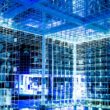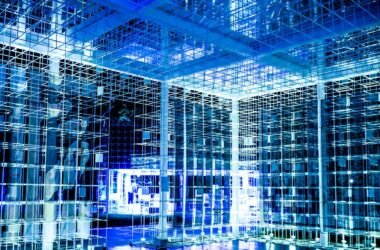Introduction
In today’s rapidly evolving technological landscape, where data is generated at an unprecedented rate and latency-sensitive applications are on the rise, traditional cloud computing models face significant challenges. Enter edge computing, a transformative paradigm that promises to revolutionize the way we process and analyze data. By bringing computing resources closer to the data source, edge computing empowers organizations to harness the power of distributed intelligence, enabling real-time decision-making, enhanced user experiences, and improved operational efficiency. In this blog post, we will dive into the world of edge computing, exploring its definition, key components, benefits, and future implications.
Defining Edge Computing
Edge computing refers to a decentralized computing infrastructure that brings data processing, storage, and analysis closer to the edge of the network, where data is generated and consumed. Instead of relying on a centralized cloud infrastructure, edge computing utilizes a distributed network of edge devices, gateways, and servers that are geographically dispersed. This proximity to data sources minimizes latency, reduces bandwidth requirements, and ensures real-time processing, making it an ideal solution for time-sensitive applications.
Key Components of Edge Computing
- Edge Devices: These are the endpoints that generate data, such as IoT devices, sensors, cameras, and smartphones. Edge devices are equipped with processing power and storage capabilities, enabling them to perform basic data analysis and filtering tasks locally.
- Edge Gateways: Positioned between edge devices and the central cloud or data center, edge gateways act as intermediaries, aggregating and preprocessing data before transmitting it to the cloud. They also provide a secure connection between edge devices and the cloud.
- Edge Servers: These are localized computing nodes located in proximity to edge devices. Edge servers have higher computational capabilities than edge devices and can perform more complex data processing tasks. They host applications, execute algorithms, and store data, ensuring quick responses to real-time demands.
Benefits of Edge Computing
- Reduced Latency: By processing data at the edge, closer to the source, edge computing significantly reduces latency. This is particularly crucial for applications that require real-time insights or low-latency interactions, such as autonomous vehicles, industrial automation, and immersive virtual reality experiences.
- Bandwidth Optimization: Edge computing helps alleviate the burden on network bandwidth by filtering and analyzing data locally before transmitting only the relevant information to the cloud. This approach reduces the volume of data that needs to be transmitted and processed in the central cloud, resulting in improved network efficiency.
- Enhanced Security and Privacy: Edge computing enables localized data processing, reducing the need for sending sensitive data to the cloud. This approach enhances data security and privacy, minimizing the risks associated with data breaches and unauthorized access.
- Scalability and Reliability: The distributed nature of edge computing allows for scalable and resilient systems. By distributing computing power across multiple edge devices and servers, organizations can handle sudden surges in data volume or network demand without overburdening the central cloud infrastructure.
- Offline Functionality: Edge computing enables applications to operate even in scenarios where network connectivity is intermittent or unavailable. Local processing capabilities ensure continuous operations and critical decision-making in remote or challenging environments.
Future Implications of Edge Computing
Edge computing holds immense potential for numerous industries, shaping the future of technology in various ways:
- IoT Advancements: The Internet of Things (IoT) heavily relies on edge computing to handle the enormous amount of data generated by interconnected devices. Edge computing allows for real-time data analysis, predictive maintenance, and localized decision-making, fueling the growth of IoT applications.
- 5G Networks: The deployment of 5G networks will facilitate the proliferation of edge computing. The high bandwidth and low latency offered by 5G will enable seamless communication between edge devices and edge servers, unlocking a new era of ultra-responsive and bandwidth-intensive applications.
- Autonomous Systems: Edge computing plays a critical role in enabling autonomous systems, such as self-driving cars and drones. By processing data locally, these systems can make split-second decisions, enhancing safety, reliability, and overall performance.
- Smart Cities: Edge computing enables the development of smart city initiatives by providing real-time analytics, optimizing traffic management, improving public safety, and optimizing resource allocation in urban environments.
Conclusion
Edge computing represents a transformative paradigm shift in the world of computing, empowering organizations to overcome the limitations of traditional cloud-based architectures. By bringing computing resources closer to data sources, edge computing unlocks the potential for real-time decision-making, reduced latency, enhanced security, and improved operational efficiency. As we embrace the era of IoT, 5G networks, and autonomous systems, the power of distributed intelligence offered by edge computing will continue to shape the future of technology, enabling a new generation of innovative applications and services.
Please let us know in the comment section if this post has helped you understand “Edge Computing” any better. Happy reading!









